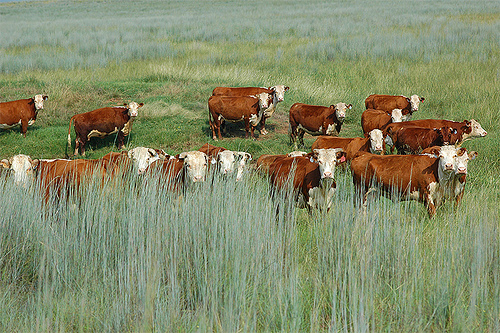
Visitors gather at Bracken Cave near San Antonio, Texas, to experience the nightly flight of millions of Mexican free-tailed bats. A public education webinar is set for Sept. 18. Registration is free. Photo courtesy of: Bat Conservation International
Want to know more about one of the most beneficial, yet misunderstood mammals on earth? Learn more about the amazing life of bats including the home of the world’s largest bat colony as the U.S. Forest Service co-sponsors a live distance learning web broadcast on Sept. 18. Read more »
Young toddlers and children crowded the tents, shuffling and giggling, as they waited for their parents to purchase produce for the family. The Arlington Farmers’ Market was filled with customers who participate in the Women, Infants and Children program (WIC) and farmers who were excited to cater to the enormous turn out. Well over 200 families came out in the mid-morning heat of Texas to receive their Farmers’ Market Nutrition Program (FMNP) vouchers.
Through the FMNP, WIC participants are able to access locally grown fruits, vegetables, and herbs that promote the well being and health of themselves and/or their children. Just last year in 2011, 1.9 million WIC participants received FMNP benefits, which, when redeemed, surpassed 16.4 million dollars in total revenue for participating farmers and farmer’s markets.
On hand this day were Ann Salyer-Caldwell, Tarrant County WIC Director, Sam Varela, the FMNP State Director of Texas Department of Agriculture, Kay Dillard, the Director of the Tarrant Area Food Bank, Dorothy “Toni” Savage-Oakford, a community health worker with the Tarrant County Health Department, and Samantha Swain, the local FMNP Coordinator. Read more »
Acting Deputy Under Secretary Judith Canales traveled to Texas recently to announce a much needed change to the USDA Rural Development water and wastewater funding process. Canales met with community members and local leaders in the City of Peñitas water treatment plant during her visit, and also spoke before members of the National Association for Latino Community Asset Builders 2012 Summit, held in McAllen.
The change to the funding process for water and wastewater treatment facilities will assign priority points for projects in colonias. The funding change will help increase investments needed to strengthen these communities and improve the quality of life for their residents, ultimately helping colonias address significant health risks.
The announcement was a terrific follow up to the new “Border Community Capital Initiative” (Border Initiative) MOU between U.S. Department of Housing and Urban Development (HUD), the U.S. Department of Agriculture – Rural Development (USDA-RD) and the U.S. Department of the Treasury’s Community Development Financial Institutions Fund (CDFI Fund) in June 2012. Read more »

On J.A. Ranch pastures, cattle are rotated to maintain a stubble height of six inches or greater in a three- to four-pasture rotation system.
James K. “Rooter” Brite, Jr. is a born-to-the-land Texas rancher and participant in USDA’s Natural Resources Conservation Service (NRCS) conservation programs.
Brite was born and raised on the ranch his grandfather, J.A. Brite, purchased in 1929, near Bowie, Texas. These days he runs more than 850 cows and yearlings on 3,400 acres of shallow, rocky soils, tall grass prairie and post oak cross timber in an area that receives less than 30 inches of rainfall annually. Read more »

L.H. Webb, a rancher in Pampa, Texas, addresses the group at the training on his ranch to explain the management practices he has implemented to benefit the lesser prairie-chicken.
Cattle ranchers in the Texas Panhandle are interested in raising more than just cattle and grass. They also want to raise chickens—lesser prairie-chickens, to be exact!
The lesser prairie-chicken is a ground-nesting bird native to the mixed-grass prairies of the Texas panhandle, Colorado, Kansas, New Mexico and Oklahoma. Lesser prairie-chickens are known for the unique mating dance performed by the colorful males. Read more »
Working alongside USDA agencies such as the Natural Resources Conservation Service (NRCS) is second nature for the Texas Small Farmers and Ranchers Community Based Organization.
Founded in 1998, the organization is dedicated to assisting limited resource agricultural producers in parts of Texas with accessing services and programs offered by state and federal agricultural agencies.
Today, the Texas Small Farmers and Ranchers Community Based Organization has grown into a dynamic 400-member organization. It works closely with NRCS staff across Central and East Texas to ensure the success of the nonprofit’s outreach efforts to landowners. Read more »



